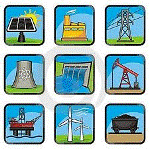Department of Agricultural Economics: Undergraduate Research

Op-Eds from ENSC230 Energy and the Environment: Economics and Policies
Date of this Version
Fall 12-13-2019
Document Type
Editorial
Citation
Kabanda, Herve Christian. Op-Ed from ENSC 230. Energy and the Environment: Economics and Policy, University of Nebraska-Lincoln, Department of Agricultural Economics, Fall 2019.
Abstract
The Rwanda Third National Communication Under the United Nations Framework Convention on Climate Change mentions that Green House Gas (GHG) emissions per capita increased from 532.39kg (2006) to 676.23kg (2015) with an annual increase of 2.46%. As of 2015, the dominant emissions are from agriculture (70.4%) followed by energy (20.11%). Urea application in agriculture have increased from 1,246,400 to 2,559,000 tons of CO2 eq. Charcoal or wood being the primary source for cooking; emissions from domestic energy use has increased from 626,800 to 741,400 tons of CO2 eq. If such trends continue severe health issues, deforestation, soil erosion and droughts will be the heavy price Rwanda will have to pay.
However, an investment in solar and biogas energy sources can be a solution in mitigating the afore-mentioned problems.
In the developing world, Texas, USA is ranked by the Solar Energy Industries Association (SEIA) as the seventh in USA for cumulative solar capacity as of 2017. SEIA reports that Texas has 532 solar companies including 100 manufacturers. Additionally, around 210,000 Texas homes use solar power due to improved business models, distribution channels, service provider networks and low costs. Moreover, customers of solar systems can claim a 30% tax credit due to a federal government investment tax. The cost of solar is estimated at an average of $0.12/Kwh or 110RWF/Kwh while costs range from 89 – 189 RWF/Kwh (for residential customers) and from 189 – 192 RWF/Kwh (for non-residential customers) in Rwanda. According to Clean Energy Wire, Germany has 8,900 biogas power stations and 183 biomethane plants as of 2015. The biomethane plants feed pure methane into natural gas network to be used as a cooking fuel. The biogas technology also provides a liquid fertilizer which can directly be applied to agricultural fields or home gardens. Biogas power stations and biomethane plants have helped Germany avoid 156.1 million tons of CO2 eq. in 2015. However, Germany deploys heavy investments (e.g.: 15 billion euros in 2015) in renewable energy systems including biogas power stations and biomethane plants. In Rwanda, the National Domestic Biogas Programme (NDBP) has made tremendous efforts in disseminating biogas plants to interested citizens since 2009. To this day, some biogas plants are still operational and others are not due to construction flaws, lack of feedstocks and skilled labor to operate the biogas plants. The failure of some biogas systems doesn’t imply that the biogas technology is not feasible in Rwanda but better policies and better technologies are needed to improve this sector. According to Amy Yee, New York Times Journalist, the cost of biogas plants ($450 to $900) are significantly high for poor families in Rwanda with an average income of $70/month. However, the government of Rwanda is providing great incentives for all parties investing in renewable energies. As of 2019, the government has exempted import taxes of 23% and 18% value added tax paid by customers for all renewable energies. Therefore, it is safe to say that investments in renewable energies such as biogas and solar is worth it.
Solar and biogas energy resources have the potential of creating jobs and providing a means of fighting deforestation, soil erosion, droughts and severe health issues. As Rwanda strives to be one of the most pristine places in the worldwide, an investment in solar and biogas is worthwhile.
Included in
Environmental Indicators and Impact Assessment Commons, Natural Resources and Conservation Commons, Oil, Gas, and Energy Commons, Other Environmental Sciences Commons

